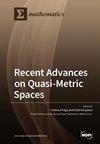城市建设绩效评价的混合模糊法
IF 2.3
3区 数学
Q1 MATHEMATICS
引用次数: 0
摘要
城市建设绩效评估不仅有助于优化城市功能、提升城市品质,还有助于可持续城市的发展。然而,大多数城市建设绩效评价的评分规则过于繁琐,对数据完整性的要求非常高。此外,不同城市建设评价指标的属性、变化尺度和范围往往会导致结果的不确定性和模糊性。本研究提出了一种混合模糊法,分两个阶段进行城市建设绩效评价。首先,针对历史统计数据以及不同类型数据的不稳定性,结合城市建设指标的均值和标准差,制定了城市绩效指数(CPI)。考虑到数据分析中的抽样误差,采用参数估计法得出了 CPI 的 100% × (1 - α) 置信区间。然后采用巴克利模糊方法,将 CPI 的统计估计量扩展为模糊估计量,进而提出了模糊 CPI。为确定城市建设的具体改进方向,应用模糊公理设计(fuzzy AD)方法探讨了城市管理者设定的目标与实际绩效之间的关系。最后,以中国六个城市为例,说明了所提方法的有效性和实用性。结果表明,重庆在多个评价指标上的绩效低于其他城市。所提出的方法兼顾了城市建设绩效评价的统一性和多样性问题。它可以对各城市的城市建设水平进行定量评价,为政府相关部门优化城市建设规划、科学制定城市建设政策提供理论支持和决策依据。本文章由计算机程序翻译,如有差异,请以英文原文为准。
Hybrid Fuzzy Method for Performance Evaluation of City Construction
Evaluating the performance of city construction not only helps optimize city functions and improve city quality, but it also contributes to the development of sustainable cities. However, most of the scoring rules for evaluating the performance of city construction are overly cumbersome and demand very high data integrity. Moreover, the properties, change scale, and scope of different evaluation indicators of city construction often lead to uncertain and ambiguous results. In this study, a hybrid fuzzy method is proposed to conduct the performance evaluation of city construction in two phases. Firstly, a city performance index (CPI) was developed by combining the means and standard deviations of indicators of city construction to address the volatility of historical statistical data as well as different types of data. Considering the sampling errors in data analysis, the parameter estimation method was used to derive the 100% × (1 − α) confidence interval of the CPI. Buckley’s fuzzy approach was then adopted to extend the statistical estimators from the CPI into fuzzy estimators, after which a fuzzy CPI was proposed. To identify the specific improvement directions for city construction, the fuzzy axiom design (fuzzy AD) method was applied to explore the relationship between the targets set by city managers and actual performance. Finally, an example of six cities in China is provided to illustrate the effectiveness and practicality of the proposed method. The results show that the performance of Chongqing on several evaluation indicators is lower than that of other cities. The proposed method takes into account the issues of uniformity and diversity in the performance evaluation of city construction. It can enable a quantitative assessment of the city construction level in all cities and provide theoretical support and a decision-making basis for relevant government departments to optimize city construction planning and scientifically formulate city construction policies.
求助全文
通过发布文献求助,成功后即可免费获取论文全文。
去求助
来源期刊

Mathematics
Mathematics-General Mathematics
CiteScore
4.00
自引率
16.70%
发文量
4032
审稿时长
21.9 days
期刊介绍:
Mathematics (ISSN 2227-7390) is an international, open access journal which provides an advanced forum for studies related to mathematical sciences. It devotes exclusively to the publication of high-quality reviews, regular research papers and short communications in all areas of pure and applied mathematics. Mathematics also publishes timely and thorough survey articles on current trends, new theoretical techniques, novel ideas and new mathematical tools in different branches of mathematics.
 求助内容:
求助内容: 应助结果提醒方式:
应助结果提醒方式:


